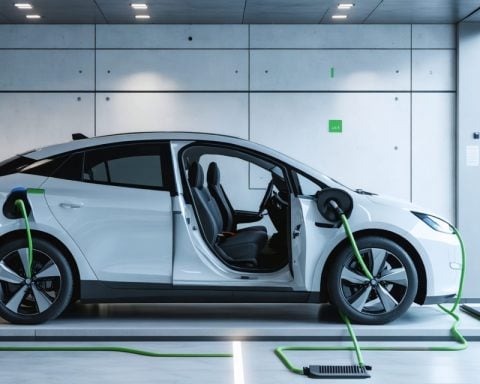- Sodium-ion batteries are emerging as a sustainable alternative to lithium-based technology, driven by a $50 million initiative by Argonne National Laboratory and other U.S. labs.
- Using abundant sodium resources, these batteries offer environmental and economic benefits over lithium-ion, which involves costly and less eco-friendly mining practices.
- They are safer than lithium-ion batteries, exhibiting greater stability and reduced fire risk.
- Challenges include improving energy density, an area where sodium-ion currently underperforms compared to lithium-ion.
- Innovations, led by companies like CATL, are driving towards potential breakthroughs in sodium-ion technology.
- Sodium-ion batteries have the potential to redefine energy storage on a global scale, enhancing sustainability and energy security.
In a sweeping bid to redefine sustainable energy, sodium-ion batteries are capturing global attention as a viable alternative to traditional lithium-based technology. At the heart of this groundbreaking shift is a $50 million initiative led by the Argonne National Laboratory, alongside seven esteemed U.S. national labs.
Rethinking the Battery Landscape
These batteries are reshaping the energy landscape by taking advantage of sodium, an element as common as table salt and seawater. This abundance means sodium-ion batteries can be produced without the hefty environmental and economic burdens tied to lithium mining—paving the way for more scalable and eco-friendly solutions.
Why Sodium-Ion is Stealing the Spotlight
Safety is a linchpin of the sodium-ion advantage. These batteries are notably stable, slashing the risk of fires and failures, a persistent issue with lithium counterparts. Ecologically, they’re a boon, with sodium extraction leaving a smaller footprint compared to the environmentally taxing practices of lithium mining.
Challenges and Innovations in the Spotlight
Yet, the path to replacing lithium-ion isn’t without its hurdles. Enhancing energy density is a critical challenge, where sodium-ion currently lags. But innovation is in high gear, with industry giants like CATL pushing the boundaries of development, hinting at breakthroughs on the horizon.
The Road Ahead: A Glimpse into a Greener Future
As global research propels sodium-ion technology forward, its potential to transform energy storage is evident. These batteries promise not only a sustainable alternative but also a chance to revolutionize how we store energy worldwide. As they edge closer to mainstream adoption, sodium-ion batteries may very well become the backbone of tomorrow’s energy systems.
For more insights into cutting-edge energy solutions, explore the advancements at Argonne National Laboratory.
Sodium-Ion Batteries: The Green Revolution in Energy Storage
New Insights Into Sodium-Ion Battery Technology
Market Forecasts and Trends
Sodium-ion batteries are expected to capture a significant share of the energy storage market by 2030, thanks to their cost-effectiveness and sustainable attributes. Analysts forecast a shift in investment from lithium to sodium, potentially reshaping the global battery landscape.
Innovations and Developments
Recent innovations include enhanced electrode materials and advanced electrolyte compositions that aim to boost the energy density and lifespan of sodium-ion batteries. Companies like CATL are pioneering these advancements, showing promising lab-scale results that suggest commercial viability within the next five years.
Security and Environmental Sustainability
Unlike lithium-ion batteries, sodium-ion technology poses lower environmental risks. The supply of sodium is geopolitically stable, reducing reliance on lithium-rich countries. Furthermore, less intensive mining and recycling processes contribute to a reduced carbon footprint, aligning with global environmental goals.
Essential Questions and Answers
What are the main advantages of sodium-ion batteries compared to lithium-ion batteries?
Sodium-ion batteries are safer due to their stability, reducing fire risks, and are more environmentally sustainable. They use abundant materials, which lowers costs and minimizes ecological impact. Additionally, sodium-ion technology offers geopolitical stability in terms of raw material supply.
What challenges do sodium-ion batteries face in competing with lithium-ion technology?
The primary challenges include lower energy density and shorter lifespan. Researchers are actively working on improving these aspects by developing new materials and cell designs. Overcoming these hurdles is crucial for sodium-ion batteries to achieve widespread adoption.
How soon can we expect sodium-ion batteries to be commercially available, and what will be their initial applications?
Experts anticipate commercial rollout within the next five years, with early applications focusing on stationary energy storage systems and smaller-scale electronics. As technology improves, sodium-ion batteries are expected to enter the electric vehicle market, offering a more sustainable option to lithium-ion batteries.
For further exploration of energy solutions, visit the Argonne National Laboratory.







